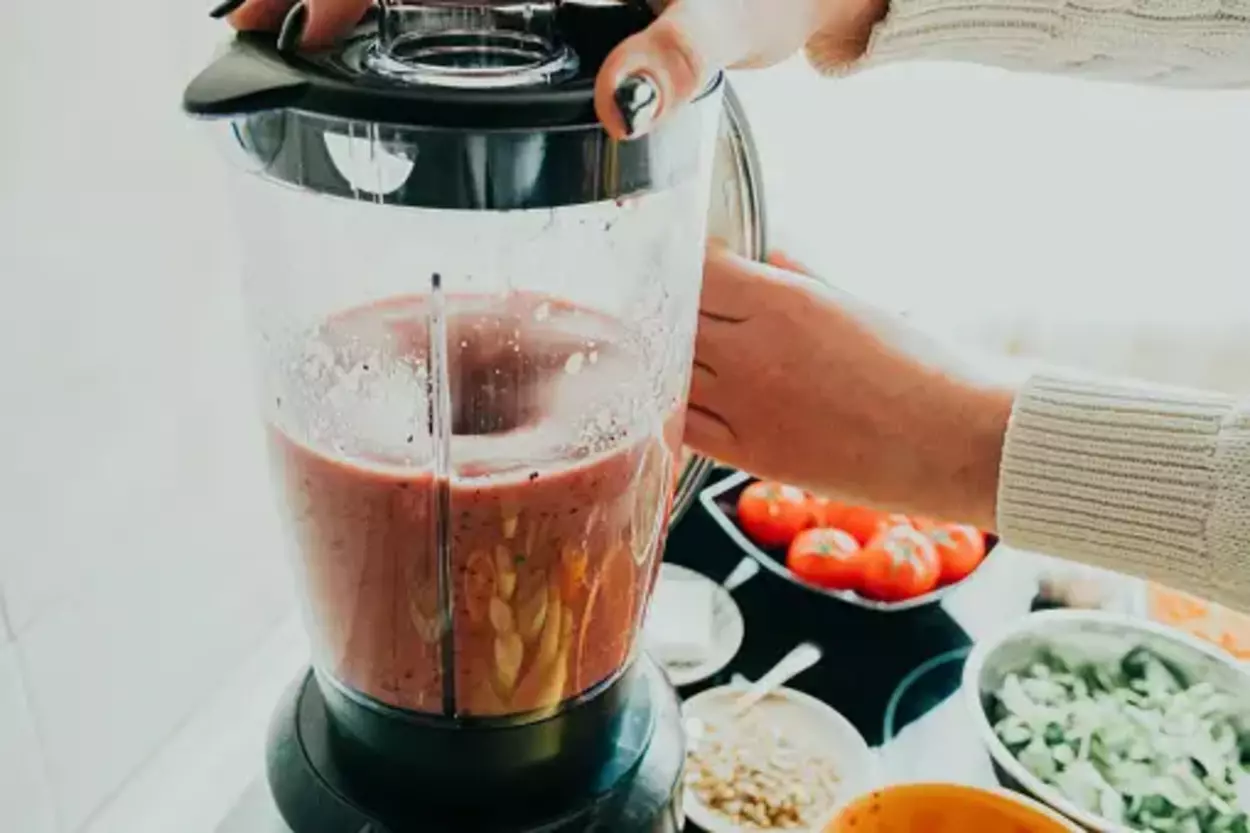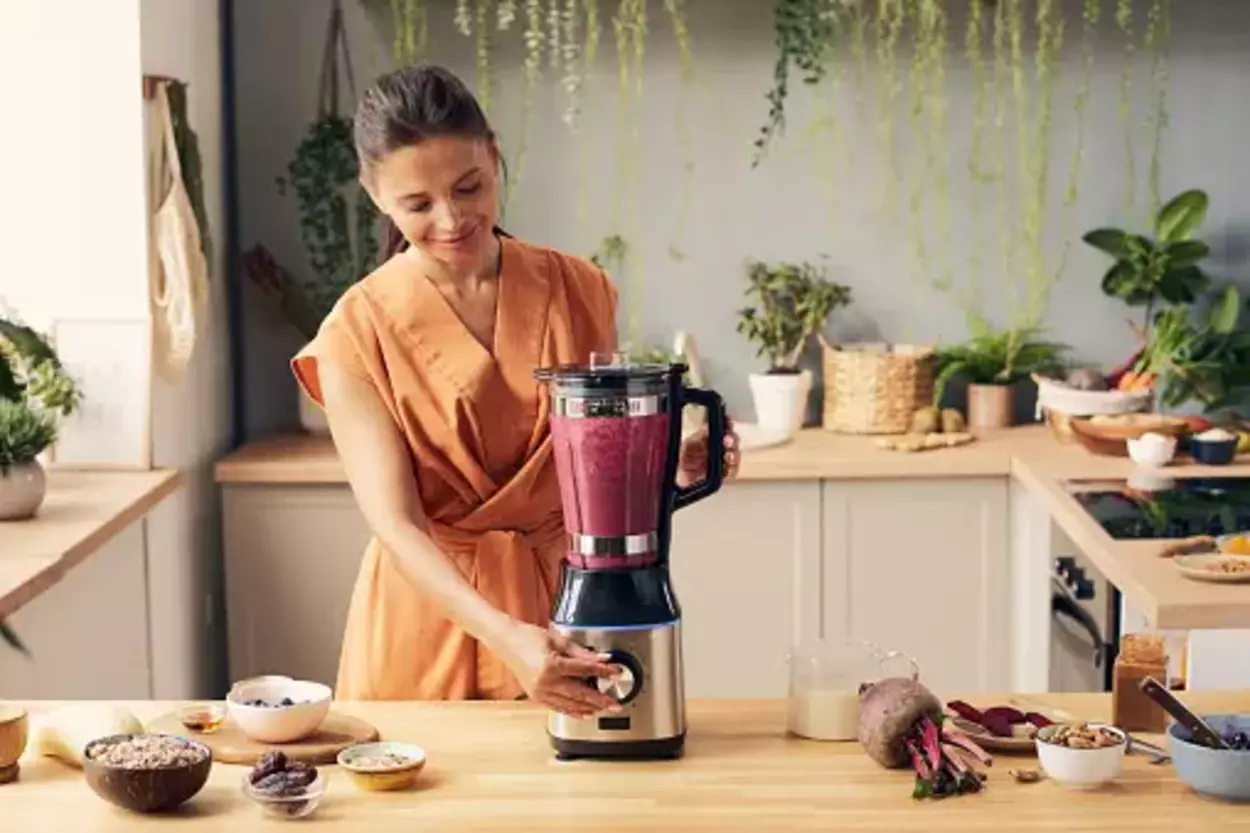In today’s fast-paced culinary world, blenders have become the unsung heroes of our kitchens, quietly working their magic behind the scenes. These versatile appliances, whether they’re sleek Ninjas or trusty Osters, have earned their place on our countertops, becoming indispensable tools for everyday cooking and nutrition.
One unique and top feature of Ninja blenders that many other brands may lack is their patented Total Crushing Technology, which provides exceptional blending power to crush ice, fruits, and vegetables into smooth, consistent blends. On the other hand, Oster blenders come with Duralast All-Metal Drive, which offers enhanced durability and longevity.
When comparing different blenders, it’s not just about the specs and features; it’s about the way they seamlessly fit into our lives, making our daily kitchen adventures a little easier and a lot more delicious.
Let’s dive into the world of blenders and see which of these kitchen companions – Ninja or Oster – is your perfect blending partner.
Brand Background
Let’s take a sneak peek at the brand background of both the blenders.
Ninja
Ninja, the brand behind some of the most innovative blenders, is a relatively new player in the kitchen appliance arena. Established in 2003 by Mark Rosenzweig, this brand has swiftly climbed the popularity charts with its powerful and feature-packed blenders.
Known for their cutting-edge technology and sleek designs, Ninjas have gained a reputation for helping home chefs blend, chop, and process with precision.
Oster
In contrast, Oster is a seasoned veteran, tracing its roots back to 1924 when John Oster founded the brand. With nearly a century of experience, Oster is renowned for its reliability and time-tested kitchen appliances.
The brand has a loyal following among those who value durability and classic design. Over the years, Oster has continued to evolve, adapting to modern tastes while keeping its commitment to quality intact.
Detailed Comparison
1. Specifications
A popular Ninja model, such as the Ninja Professional BL610, boasts an impressive 1,000-watt motor, a 72-ounce pitcher, and a range of blade options, including Total Crushing blades for smoothies and ice crushing.
On the other hand, the Oster Pro 1200 is a contender with a 1,200-watt motor, a 24-ounce smoothie cup, and dual-direction blade technology that promises thorough blending.
2. Power and Performance
- Wattage and Motor Power
Ninja blenders typically have a higher wattage and more powerful motors, ranging from 900 to 1500 watts, making them capable of handling tougher ingredients with ease.
Oster blenders usually have slightly lower wattage motors, typically in the 600 to 1000-watt range, which are still powerful but may require more time for tougher blending tasks.
- Blending Performance
Both Ninja and Oster blenders can effectively blend soft fruits and most ingredients. Ninja blenders excel at crushing ice and handling tough vegetables more efficiently due to their higher power.

3. Design and Build Quality
Ninja blenders are known for their modern and sleek design aesthetics. They often feature a bold, angular design with a clean control panel.
The build quality of Ninja blenders is generally robust, with a focus on durability. They are often constructed with high-quality materials.
Oster blenders tend to have a more classic and understated design with a focus on simplicity. They often feature a more traditional shape and control layout.
Oster blenders are known for their robust construction, ensuring longevity and consistent performance over time.
4. Blade Technology
Ninja’s Total Crushing blades are known for their ability to pulverize ice and ingredients efficiently. This technology sets Ninja blenders apart by delivering superior blending and crushing capabilities, making them suitable for a wide range of tasks, from making smoothies to crushing ice for frozen drinks.
Oster’s dual-direction blades are designed for consistent results. However, the Duralast All-Metal Drive design incorporates a metal-to-metal connection between the blender’s motor and blades, providing a more robust and reliable connection compared to blenders with plastic components.
The choice between the two might come down to specific blending needs.
5. Capacity and Jar Size
Having different jar sizes is essential to accommodate different batch sizes, from personal smoothies to larger family servings.
Ninja blenders offer a range of jar sizes, including single-serve cups and larger pitchers, with materials like BPA-free plastic and glass. Oster blenders also provide various jar options, with glass jars being a common choice.
6. Speed and Control Options
Ninja blenders usually offer a wide range of speed settings and preset programs, providing users with more control over blending speed and consistency. Oster blenders typically come with a more straightforward control interface, often with a few basic speed options.
Ninja’s broader range of speed and control options gives it an advantage in versatility, allowing users to fine-tune their blending results.

7. Noise Level:
Ninja blenders, especially the high-powered models, tend to be noisier during operation, while Oster blenders are generally quieter in comparison.
8. Price and Value for Money
Ninja blenders are sometimes more expensive owing to their superior features and power. Oster blenders are less expensive. Ninja and Oster blenders are both multifunctional and may be used for a variety of activities, such as preparing smoothies, soups, and sauces.
Ninja blenders sometimes have one-of-a-kind features such as Auto-iQ technology for one-touch blending or customizable programs for certain recipes. Oster blenders may lack some complex functions, but they are dependable for basic blending jobs.

User Reviews:
Ninja Reviews
- Amazon User (5 stars): “I’ve had the Ninja Professional BL610 for a year now, and it’s been fantastic. It blends everything from smoothies to soups with ease. The power is impressive. Cleanup is straightforward, and it still looks brand new.”
- Reddit User (r/Blenders): “I recently upgraded to a Ninja model with Auto-iQ technology. It’s like having a personal smoothie chef. The presets make life easier, and it’s handled frozen fruit and ice like a champ. I’d recommend it.”
- Amazon User (4 stars): “The Ninja Mega Kitchen System is a beast! I’ve used it daily for my protein shakes and even to make dough for bread. While it’s powerful, it’s quite noisy. But for the price, it’s a great deal.”
Oster Reviews:
- Amazon User (5 stars): “My Oster Pro 1200 is a workhorse. I’ve had it for three years, and it’s still going strong. It blends smoothies beautifully and can handle the occasional ice crush. For the price, it’s a steal.”
- Reddit User (r/Frugal): “I wanted a reliable blender on a budget, and the Oster Pro 1200 fit the bill. It’s noisier than some high-end options, but it gets the job done without breaking the bank. I’m happy with my purchase.”
- Amazon User (4 stars): “The Oster Versa Pro Series Blender has been my go-to for years. It’s perfect for my morning shakes and can even handle nut butter. It’s been a solid investment, and I appreciate the 7-year warranty.”
These user reviews shed light on the experiences of real customers with both Ninja and Oster blenders. Both brands have satisfied users who appreciate the performance and durability of their blenders.
The choice ultimately comes down to individual preferences and budget considerations.
Pros and Cons
Here’s a concise summary of the pros and cons of Ninja and Oster blenders:
| Ninja | Oster | |
| Pros | ||
| – Strong motors for efficient blending | – Durable and built to last | |
| – Versatile blade options | – Dual-direction blades for thorough blending | |
| – Extensive control options | – Budget-friendly prices | |
| Cons | ||
| – Price may be higher than some competitors | – Less powerful motors in some models | |
| – Mixed reviews regarding durability | – Fewer preset options |
FAQ section
What is the difference between Ninja & Oster Pro blenders?
The blade technology is the most noticeable difference between Oster and Ninja blenders. Oster blenders, particularly the Oster Pro series, are noted for their dual-direction blade technology, in which the blades switch directions to promote even and thorough blending.
Ninja blenders frequently have Total Crushing blades, which are meant to pulverize ice and food efficiently. This difference in blade technology can substantially influence blending performance and outputs, making it an important consideration when deciding between the two manufacturers.
Is Ninja a good Blender?
Yes, Ninja is a well-known bender company.
Ninja blenders are well known for their strong engines, adaptability, and novel features. They are particularly adept at jobs such as mixing smoothies, smashing ice, and pureeing food.
Furthermore, many Ninja models include a variety of speed settings and presets, giving users exact control over their mixing.
While there have been some conflicting reviews concerning the longevity of various Ninja models, they are well-regarded in the kitchen for their efficiency and versatility, making them an excellent choice for several blending jobs.
What is the best Blender to buy in 2023?
Everyone has their own unique requirements and budget. I recommend examining current reviews and ratings on reputable sources such as consumer websites, online marketplaces, and kitchen appliance review magazines to locate the most up-to-date and appropriate blender for your needs.
Look for blenders from respected companies such as Vitamix, Blendtec, Ninja, and others, and read user reviews to make an informed purchase based on your personal tastes and needs.
Conclusion
In conclusion,
- Both the Ninja and the Oster blenders have distinct advantages.
- If you want a high-powered, multifunctional blender with a range of settings, Ninja is a good option.
- Contrarily, Oster offers durability and cost-effectiveness, making it a viable option for individuals on a limited budget.
- User reviews frequently emphasize these blenders’ performance and longevity, but the ideal decision ultimately relies on your kitchen demands and objectives.

